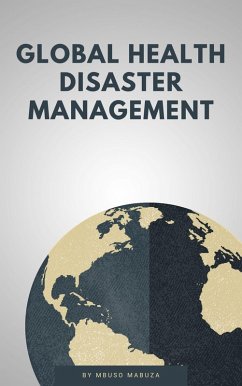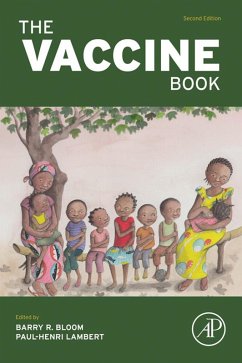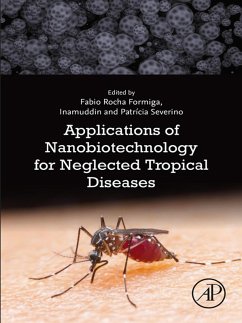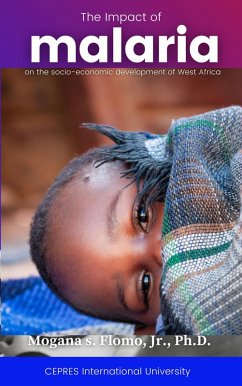
The Evolving Epidemic: A Definitive Guide to Emerging and Re-emerging Diseases (eBook, ePUB)

PAYBACK Punkte
0 °P sammeln!
In an increasingly interconnected world, the emergence and re-emergence of infectious diseases pose an unceasing challenge to global health. This comprehensive book delves into the complexities of key contemporary threats, offering a deep understanding of their biological underpinnings, clinical impacts, and public health implications.Part 1 meticulously explores Dengue, an escalating arboviral menace, examining its global spread, viral serotypes, intricate mosquito-human transmission, varied clinical manifestations, and the critical strategies for its management and prevention, including evol...
In an increasingly interconnected world, the emergence and re-emergence of infectious diseases pose an unceasing challenge to global health. This comprehensive book delves into the complexities of key contemporary threats, offering a deep understanding of their biological underpinnings, clinical impacts, and public health implications.
Part 1 meticulously explores Dengue, an escalating arboviral menace, examining its global spread, viral serotypes, intricate mosquito-human transmission, varied clinical manifestations, and the critical strategies for its management and prevention, including evolving vaccine approaches and integrated vector control.
Part 2 confronts Measles, a highly contagious vaccine-preventable disease witnessing a troubling resurgence. It dissects the Measles virus's virology, pathogenesis, and transmission efficiency, detailing its clinical progression and severe complications. The section emphasizes essential management techniques, the vital role of Vitamin A, post-exposure prophylaxis, and the paramount importance of vaccination, herd immunity, and addressing vaccine hesitancy in global eradication efforts.
Part 3 addresses Mpox (Clade I), a re-emerging zoonotic orthopoxvirus that triggered a recent public health emergency. It distinguishes the more severe Clade I from Clade II, uncovers the virus's pathobiology, animal reservoirs, zoonotic jumps, and human-to-human transmission dynamics. The clinical presentation, diagnostic challenges, antiviral treatments, supportive care, isolation, and contact tracing strategies are thoroughly examined.
Finally, Part 4 tackles Highly Pathogenic Avian Influenza A (H5N1), a persistent pandemic threat. This section details H5N1's history, global distribution across animal species, and its critical "One Health" dimension. It explores viral adaptation and concerning mammal-to-mammal transmission, clinical features in humans, diagnostic methods, antiviral strategies, and crucial public health interventions. The book concludes with an in-depth look at global surveillance and preparedness, highlighting international collaboration, rapid vaccine development, and effective risk communication for avian flu pandemics.
Designed for healthcare professionals, public health practitioners, students, and anyone concerned with global health security, this book provides essential knowledge to navigate the dynamic and complex landscape of infectious diseases, fostering a greater appreciation for the continuous vigilance, scientific innovation, and collaborative action required to safeguard humanity.
Part 1 meticulously explores Dengue, an escalating arboviral menace, examining its global spread, viral serotypes, intricate mosquito-human transmission, varied clinical manifestations, and the critical strategies for its management and prevention, including evolving vaccine approaches and integrated vector control.
Part 2 confronts Measles, a highly contagious vaccine-preventable disease witnessing a troubling resurgence. It dissects the Measles virus's virology, pathogenesis, and transmission efficiency, detailing its clinical progression and severe complications. The section emphasizes essential management techniques, the vital role of Vitamin A, post-exposure prophylaxis, and the paramount importance of vaccination, herd immunity, and addressing vaccine hesitancy in global eradication efforts.
Part 3 addresses Mpox (Clade I), a re-emerging zoonotic orthopoxvirus that triggered a recent public health emergency. It distinguishes the more severe Clade I from Clade II, uncovers the virus's pathobiology, animal reservoirs, zoonotic jumps, and human-to-human transmission dynamics. The clinical presentation, diagnostic challenges, antiviral treatments, supportive care, isolation, and contact tracing strategies are thoroughly examined.
Finally, Part 4 tackles Highly Pathogenic Avian Influenza A (H5N1), a persistent pandemic threat. This section details H5N1's history, global distribution across animal species, and its critical "One Health" dimension. It explores viral adaptation and concerning mammal-to-mammal transmission, clinical features in humans, diagnostic methods, antiviral strategies, and crucial public health interventions. The book concludes with an in-depth look at global surveillance and preparedness, highlighting international collaboration, rapid vaccine development, and effective risk communication for avian flu pandemics.
Designed for healthcare professionals, public health practitioners, students, and anyone concerned with global health security, this book provides essential knowledge to navigate the dynamic and complex landscape of infectious diseases, fostering a greater appreciation for the continuous vigilance, scientific innovation, and collaborative action required to safeguard humanity.
Dieser Download kann aus rechtlichen Gründen nur mit Rechnungsadresse in A, B, CY, CZ, D, DK, EW, E, FIN, F, GR, H, IRL, I, LT, L, LR, M, NL, PL, P, R, S, SLO, SK ausgeliefert werden.













